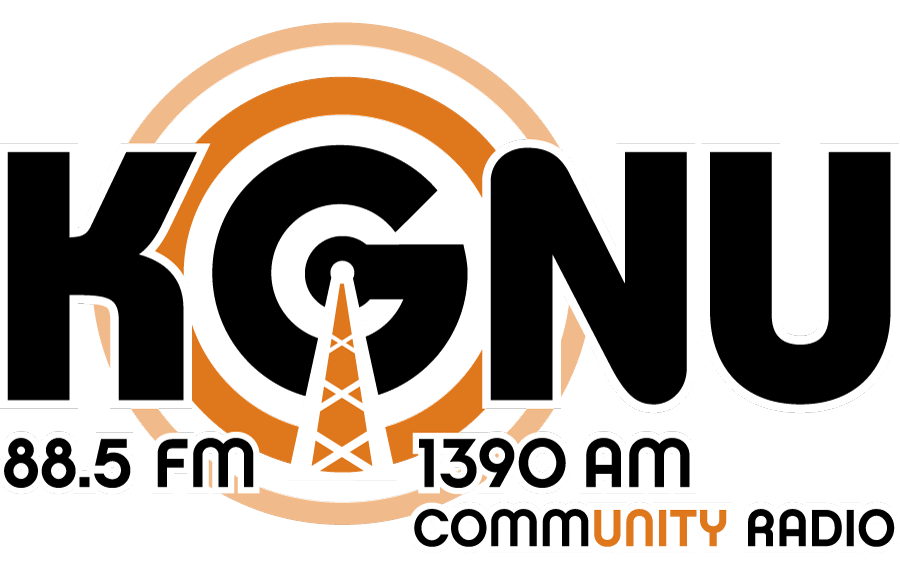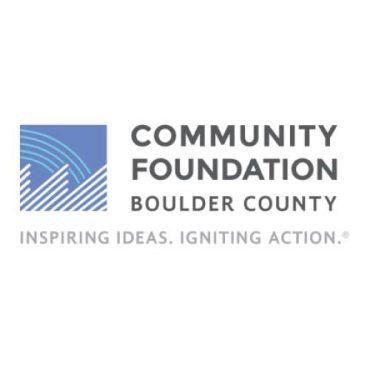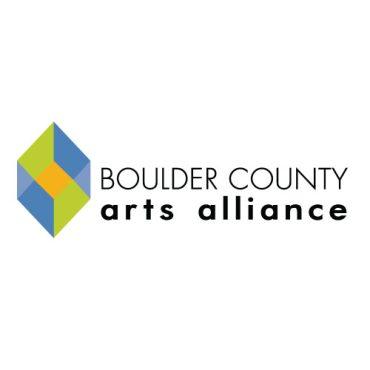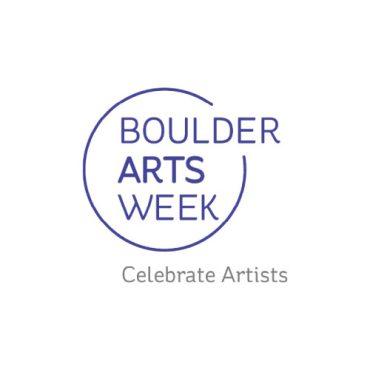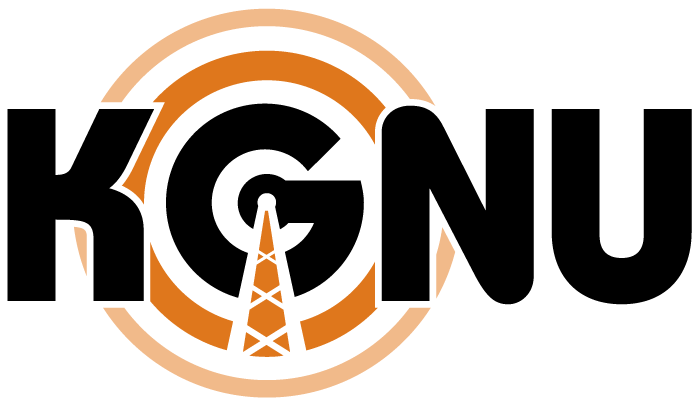Every year since 2001, the American Library Association has released a list of the “Top 10 Most Challenged Books” to keep the public up to speed on censorship efforts in libraries and schools.
On this past year’s list, 7 of the 10 most challenged books were reported for LGBTQIA+ content.
Here in Boulder, many of those books still have a home at the Public Library.
Youth Services Specialist Melanie Borski-Howard has countless examples of instances where books have helped children grow into the most authentic versions of themselves – and helped parents understand their children better.
“There was a child that came to Storytime and we watched them grow,” Borski-Howard explains. “He came and said, ‘I don’t want to be a he anymore,’ and mom was really confused. We had a relationship with them where mom just was like, “I don’t know what to do.” So, we take them to a book section. We say, “Here are books on the subject.” There are so many fun books, fabulous books for adults and children on transitioning and on finding resources on what to do. We watched this child transition, and again, he came to my Storytime as a child and transitioned and now goes to Book Queeries. So now regularly goes into the teen space. She/her, voice’s changing, becoming so happy… What I love is watching them come into who they really are and just being so happy, frustrated with mom a little bit sometimes, but happy. And that, and that is one of those stories that we love to hear.”
KGNU’s Jackie Sedley sat down with Borski-Howard and Teen Librarian Leah Byrnes to talk about banned books, as well as the Boulder Public Library’s relationship with the LGBTQ+ community – particularly with queer youth.
-
 play_arrow
play_arrow
In Boulder, the library insists on making LGBTQ+ youth feel at home. Here’s how Greta Kerkhoff
Top 10 Most Challenged Books of 2023 (American Library Association):
1. Gender Queer: A Memoir by Maia Kobabe
- Number of challenges: 106
- Challenged for: LGBTQIA+ content, claimed to be sexually explicit
2. All Boys Aren’t Blue by George M. Johnson
- Number of challenges: 82
- Challenged for: LGBTQIA+ content, claimed to be sexually explicit
3. This Book Is Gay by Juno Dawson
- Number of challenges: 71
- Challenged for: LGBTQIA+ content, sex education, claimed to be sexually explicit
4. The Perks of Being a Wallflower by Stephen Chbosky
- Number of challenges: 68
- Challenged for: claimed to be sexually explicit, LGBTQIA+ content, rape, drugs, profanity
5. Flamer by Mike Curato
- Number of challenges: 67
- Challenged for: LGBTQIA+ content, claimed to be sexually explicit
6. The Bluest Eye by Toni Morrison
- Number of challenges: 62
- Challenged for: rape, incest, claimed to be sexually explicit, EDI content
7/8. (tie) Me and Earl and the Dying Girl by Jesse Andrews
- Number of challenges: 56
- Challenged for: claimed to be sexually explicit, profanity
7/8. (tie) Tricks by Ellen Hopkins
- Number of challenges: 56
- Challenged for: claimed to be sexually explicit, drugs, rape, LGBTQIA+ content
9. Let’s Talk About It: The Teen’s Guide to Sex, Relationships, and Being a Human by Erika Moen and Matthew Nolan
- Number of challenges: 55
- Challenged for: claimed to be sexually explicit, sex education, LGBTQIA+ content
10. Sold by Patricia McCormick
- Number of challenges: 53
- Challenged for: claimed to be sexually explicit, rape
Boulder Public Library’s events LGBTQ+ events and programming:
Transcript:
Melanie Borski-Howard: So I’ll speak to banned books. I’d love Leah to talk about spaces and teen spaces and her program as well. But talking specifically to banned books, you know, just in March, ALA released their Top 10 list of challenge books. Anyone can go to the American Library Association and get this information, but the top 10, as usual, the large percent of it was LGBTQ books. So, so we try to make sure first that we have all those books available. All of these books have been challenged. And remember, books aren’t really removed/banned. To be officially banned, they have to go through quite a process, but that doesn’t mean they’re being removed from libraries.
So we want to be aware of all the challenges. Challenges are up significantly. They keep going up significantly every year. So that’s been something we’ve had to watch a lot. So, you know, after the pandemic, especially with Trump in the White House, and then it’s just gotten more and more. So we have to be really aware of banned books and censorship.
It’s really important for us to be aware because having these books are necessary to show a wider community.
Jackie Sedley: So, to be clear, even when we say banned, we mean challenged. None of these books are legally banned in the United States; in fact, very few are. Can you explain this distinction?
Borski-Howard: It’s a really good question.
So, remember, there are very few books that have been officially banned. American Library Association set up a, a process that one has to do to ban a book. So, it’s called a challenge and anything – and this doesn’t, this, this counts as databases, this counts for programs, not just books – but anything that is challenged that somebody doesn’t agree with or doesn’t want to have within the community, they have to put a challenge forth.
So usually what happens with Boulder Public Library is they go to the page on our website, they fill it out, and then if they so see fit, they can also go to ALA. Now, the problem with the, well, I’m sure the problem on their side is they need to read the book. Challenging is really just opening the person’s eyes up to the book and showing that, well, in some cases, maybe it just needs to be moved from children’s to teen, which in, in its way is challenging or censoring a book by saying, “Well, a teen can’t really understand this book, so we’re gonna move it to adult,” which is a sticky situation as well. But sometimes, sometimes we will compromise by doing something like that.
It’s all about listening and a person who’s upset about a book just needs to be listened to. So we try to take a deep breath, just listen to them as to why they’re upset about a book.
Sedley: Let’s dive into your LGBTQ book recommendations. I see that you brought a lot with you today.
Borski-Howard: There’s lots of books that I’m going to show you right now that have been These are on the top banned books.
So, Genderqueer, that’s number one. Is a book about a non-binary main character that is born a girl and does not understand why. And they talk about their process. This book, you go into the website and the author has so many things from people – from kids, from adults, from parents – that say this book saved their life. So, “I was non-binary too. I didn’t understand why I did, I didn’t agree with my gender. I was so upset. I didn’t know what was happening. Then I read this book and something is sparked. Something is like, ‘Oh!'” And this is exactly what we want literature to do. We want literature. To, to reach out to those marginalized, marginalized communities and let them see themselves. So we love, love stuff like that. So Genderqueer is an amazing book, hard to read, but Genderqueer is actually put in adult because it covers some hard topics. And by the end, they are an adult.
All Boys Aren’t Blue.
Sedley: We talked about that last time.
Borski-Howard: Yeah. Yeah, All Boys Aren’t Blue are in teen because he talks about himself It’s just an unabashed loving gay man and has known it from the time he was little but his dad is a policeman So, All Boys Aren’t Blue. And he talks about what it was like being raised by strong black father policeman, but also that he was gay, and thank God he had his grandmother. So again, these stories, someone always reaches out and says, “Wow, that’s me.” And we love that.
This Book is Gay, which is number, I believe it’s number five, by Juno Dawson, that was actually first published under their, their original gendered name, and has since, has, has since transitioned to she. And, um, it is totally just what it’s like to be gay. So Juno talks about, “I just wanted to know what gay sex was or what gay relationships mean. I wanted to spell out for people what LGBTQ+ is. I’m going to spell it out.” This is like the dictionary for gays. And Juno also says that they didn’t have this growing up and they wish they did. And really, it’s just all about information, and, and it’s, it’s wonderful. Again, this is housed in adult fiction, and it clearly is what it states it is.
The backs of all these books clearly state what, what it is, what is it, is it about. And why it’s challenged, I have no idea. So there’s my band book plea.
Sedley: Alright, Leah, turning to you. You help run a program called “Book Queeries.” Can you tell us about that?
Leah Byrnes: Yeah. Okay. So Book Queeries is our LGBTQ Book Club for tweens and teens. Um, and it’s for anyone across the gender and sexuality spectrum. You just have to be in grades 6 through 12. And all of these books amplify queer voices in the teen lit realm. We meet once a month, first Thursday of the month, from 5-6 at Rocky Mountain Equality. And we discuss the book, do an activity, and eat some snacks, because of course you always have to have snacks for a teen club, like, obviously. And so we partner with Rocky Mountain Equality to host this at their location and that’s just in an effort to introduce library teens to the resources that Rocky Mountain Equality has and for the teens who frequent Rocky Mountain Equality to also like learn about the library.
So we’re bridging that gap between two really great resources. And so, to sign up for the program, teens just have to RSVP through our events calendar. And, I don’t know how many books we order, but we give away free copies of the book in a limited quantity. But, if you sign up fast, you’re for sure going to get a copy of the book, which is fantastic. Really awesome. We’ve also had a lot of frequent author visits as well, which is great. Cause like you can get a free copy of the book and then like, maybe you can meet the author and have them sign your free copy of the book and the program has actually been running since 2020. I think I counted that we’ve done like 46 books so far.
We do a lot of different genres, different formats, including graphic novels, memoirs, novels in verse, short story collections. We cover a lot of different things, which just makes me so happy because when I was a teenager, YA just wasn’t really as big as it is now. And there weren’t that many queer stories.
So I am just so excited that teens like today just have all of these amazing queer stories to read. I would have loved that as a teen. And some of the books we have coming up, I guess I could talk about our next book since we’re taking a break in July, but we’ll be back in August for The Girl from the Sea by Molly Knox Ostertag.
It’s a fantasy romance graphic novel about a 15-year-old girl named Morgan and she’s living in this small island town and she’s not ready yet to be openly queer. But she has all of these plans for when she moves away, when she can finally start living as her authentic self. But, of course, the plan kind of falls apart as she falls in love with a Selkie, which is a mythical creature who can transform between human and seal. And the girl she falls in love with is just like, you know, so different from Morgan. Morgan wants everything to go according to plan, and This wonderful self key girl is like, Why do you need a plan? Let’s, you know, be a little chaotic and have fun. So it’s just a really beautiful story about first love, coming out to your friends and family, and what that’s like. And then there’s just a really great bonus environmental activism. So it’s a pretty great, well-rounded book. And the artwork is so good. It’s just so beautiful. I loved it. Highly recommend.
Sedley: You know, clearly there’s so much enthusiasm from staff about the Boulder Public Library’s relationship with the LGBTQ community between book queries and having these challenged books on the shelves. Melanie, can you speak more to the relationship the library has with the queer community and how that’s been built or grown over the past decade or two?
Borski-Howard: I’ve been here 20 years, so I’ve seen this community change a lot, but especially in the teen space always is a safe, well, I think the library in general, but also I feel like we’re a safe space for the LGBT community because we insist on it.
We have an all-gender bathroom, we respect that, but also I love stories like, um, there was a child that came to Storytime and we watched them grow.
He came and said, “I don’t want to be a he anymore,” and mom was really confused. We had a relationship with them where mom just was like, “I don’t know what to do.”
So, we take them to a book section. We say, “Here are books on the subject.” There are so many fun books, fabulous books for adults and children on transitioning and on finding resources on what to do. We watched this child transition, and again, he came to my Storytime as a child and transitioned and now goes to Book Queeries. So now regularly goes into the teen space. She/her, voice’s changing, becoming so happy. And that’s too, what I love is watching them come into who they really are and just being so happy, frustrated with mom a little bit sometimes, but happy. And that, and that is one of those stories that we love to hear. I mean, even though I’m still relatively new, I do have a bunch of regulars now in the teen space that I’m getting to know.
And everyone I’ve talked to about Book Queeries has been like, that’s really great. We had so many people who were really interested in these programs that we are offering. And even just coming to hang out in the teen space where they can just be free to be themselves. Especially if they can’t at home yet, they’re welcome to be there, be whoever they are while they’re here in the library, and I’m here to support that.
Sedley: Do you have recommendations for adults that are coming out and into themselves? I, myself, didn’t come out until early adulthood, and I know many others who didn’t come out until well into their adult lives, and just because someone comes out in adulthood doesn’t mean their families will be any more accepting. So, parents, or, you know, other family members would certainly benefit from these resources too.
Borski-Howard: The social justice, the 300s has an entire section, especially in the children’s section, that we get parents come all the time. I think parents get a little nervous and they want to start basic. So they’ll come into the children’s area and, I mean, just like – The Pronoun Book…you know, this is a board book, so this is for babies. You know, a baby doesn’t understand what pronouns are. This is for the caregiver, you know, and this is for the caregiver to understand just as much as it is for the baby. And I must say the world of LGBTQ books has expanded so much since Heather Has Two Mommies, and the writers are excellent. The writing is excellent.
This is another one that I actually had recommended to me by a mom who had a child that was transitioning from a very, very young age. This is another Storytime child. Very, very smart. Recognized at age four that they were in the, their body wasn’t right. And mom, being very educated, started doing everything. Brought me this book. This is Every Body: A First Conversation About Bodies. And this series, they have Our Skin: A First Conversation About Race. Being You: A First Conversation About Gender. So she brought me this book and she’s like, “This was invaluable for me to be able to talk to my child on a simplistic level.”
What I love too about our community is they give us feedback. So they will tell us when the books work and when they don’t. And of course, some children really like nonfiction. Some children want fiction. And again, with a parent seeing the experience of another parent in a book is invaluable. I Am Jazz is all about, this is another banned book, but this is mom and dad going on the journey with the main character, which I love to see, too.
We’re seeing lots and lots of non-binary books. We’re seeing tons, again, like going from Heather Has Two Mommies. Um, which was not very well-done and so targeted, but we’re seeing so many books, so many fabulous books that are just two women being, you know, that are just family. They’re just family stories.
Sedley: So you would recommend these children’s books to readers of any age? You know, that actually makes a lot of sense to me, because when people are first questioning their own identities, or trying to understand their loved one’s identities, I’d imagine that intensive theoretical literature can be really intimidating, or just not what those individuals need at the start of their respective journeys. They might not want to sit down and have to read a huge book, especially if they don’t want to admit that they’re having trouble understanding their child.
Borski-Howard: Right! So they come in looking for a book “for their child.”
Brynes: Yeah, I think I would also recommend like some children’s and teen lit because it’s just like more accessible, but I also am a big fan of like memoirs and stuff like that too, creative non-fiction, so loved Elliot Page’s memoir, I would probably recommend that.
But, somebody actually gifted this to me for, I think, my birthday. So, this is A Quick & Easy Guide to Queer & Trans Identities. And it’s actually just a little graphic novel that kind of explains everything for you. Like, what are these different identities and stuff. But it’s just full of funny illustrations and it just makes it, like, easier to read to get through without feeling, like, overwhelmed. I think it’s just accessible for every age group.
Borski-Howard: Yeah, so many fabulous books are coming out. I think, I think being that literature is art and the LGBT community is so big in the publishing world, we’re just seeing so many great books. great literature and just simple stories. And again, even though it’s fiction, it can be informational.
You know, you see that with fantasy books all the time. I had a mom come up to me saying, “All my child will do is read fantasy.” And I’m like, “But it’s an easy way to learn about the world.” You know, you don’t need sometimes having it right in your face. The actual story is a little hard, but if you take a step back and you do it in graphic novel format, you simplify it. It’s easier for not only the child, but again, for the parent or for the questioning youth.
And we have ALA to back us up too, which is fabulous as well.
Sedley: I’d imagine that having that kind of backup, that institutional support can create some good footing for community organizations like the library when working to cultivate safety for marginalized groups, especially when those groups are being challenged on a broader scale. Just last week, Dave Williams, the GOP party chair, sent out a mass email and social media post saying that all gay people are “godless groomers,” and that all PRIDE flags should be burned. Challenges to his statements were met with public criticism. One of the first Republicans to call for Williams removal from his position, that was Jefferson County Chair Nancy Pallozzi, was censured for circulating a digital petition.
All of that to say, even though Colorado is far from perfect, Boulder included, knowing that the library here – by and large – offers a safe space for queer youth that is being protected by folks like you two is so important. And I think our listeners will appreciate knowing that too. Anything else that either of you want to add?
Byrnes: Yeah, I was just gonna say, it feels like very important for me doing that because I grew up queer in conservative, small town Wyoming. And, the library was supportive, but at the time there wasn’t much out there. I think I found like one or two queer books on the shelf and was like, “Oh, I guess this actually explains a lot that I had been feeling and not understanding,” you know? So I just want to make sure that we are always that resource for queer questioning youth, and that even when there is a bunch of stuff going out there in the world of non-supportive people, hateful people, that at least they have somewhere to be themselves and feel safe.
Borski-Howard: Yeah, and I’m so excited with Drag Story Hour. We are gonna start implementing a regular story hour. So it starts in August and we’ll be alternating between Miss Shirley and Mrs. Zarah. So it’ll be the third Saturday of every month at 10:15. It’s already in the calendar. We had no hesitation with doing it. It was very exciting. Staff was completely supportive to do it regularly because it’s one of our most popular Storytimes. Having a child see somebody else dressed in drag, all the questions that it brings up, the powerful questions, having the parent, and just knowing that there’s a resource. Because I’m the rep for Drag Story Hour for Colorado, I get questions all the time, “When is your next Drag Story Hour?” Just because the parent wants to see it, wants to be around other people that want to see it. So being that we’re starting that regularly, I think it’s going to be huge for the community. So, very excited.
